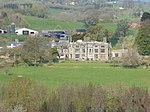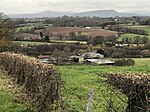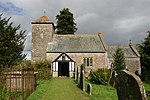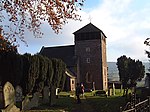Treowen
Country houses in WalesGrade I listed buildings in MonmouthshireHouses in MonmouthshireRegistered historic parks and gardens in Monmouthshire

Treowen (or Tre-owen) is an early 17th-century house in Monmouthshire, Wales, regarded as "the most important gentry house (of its date) in the county". It is located in open countryside within the parish of Wonastow, about ½ mile (1 km) north-east of the village of Dingestow, and 3 miles (4.8 km) south-west of Monmouth. After being used as a farmhouse for three centuries, Treowen now operates as a conference and functions venue and holds the annual Wye Valley Chamber Music Festival. It is a Grade I listed building, and its gardens are designated Grade II on the Cadw/ICOMOS Register of Parks and Gardens of Special Historic Interest in Wales.
Excerpt from the Wikipedia article Treowen (License: CC BY-SA 3.0, Authors, Images).Treowen
Queen's Hill,
Geographical coordinates (GPS) Address Nearby Places Show on map
Geographical coordinates (GPS)
| Latitude | Longitude |
|---|---|
| N 51.796 ° | E -2.7822 ° |
Address
Treowen House
Queen's Hill
NP25 4BE , Mitchel Troy
Wales, United Kingdom
Open on Google Maps









